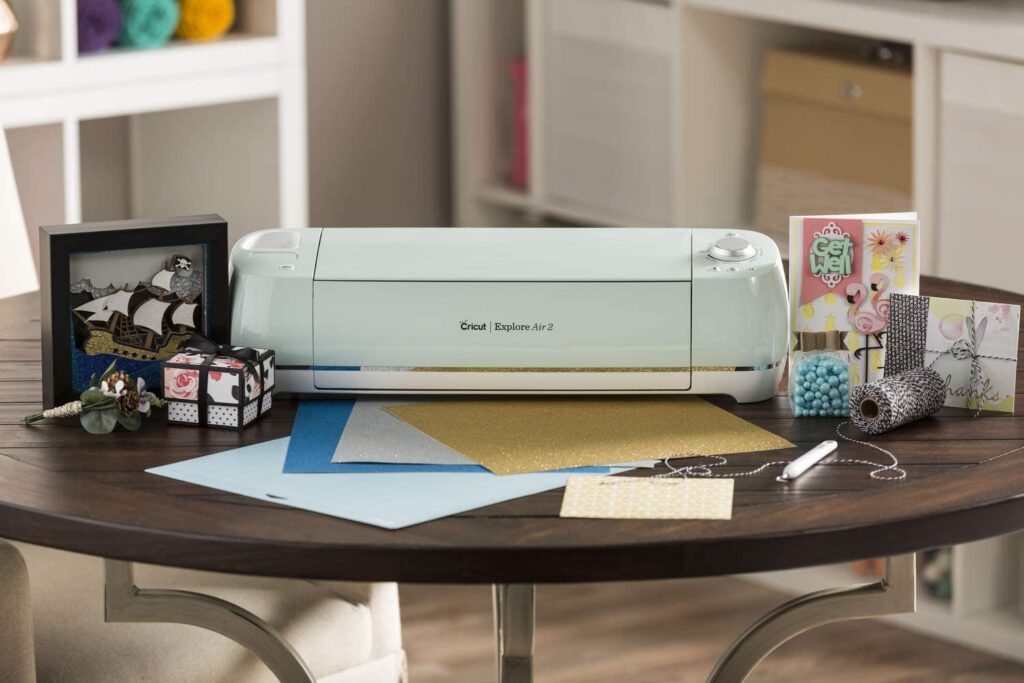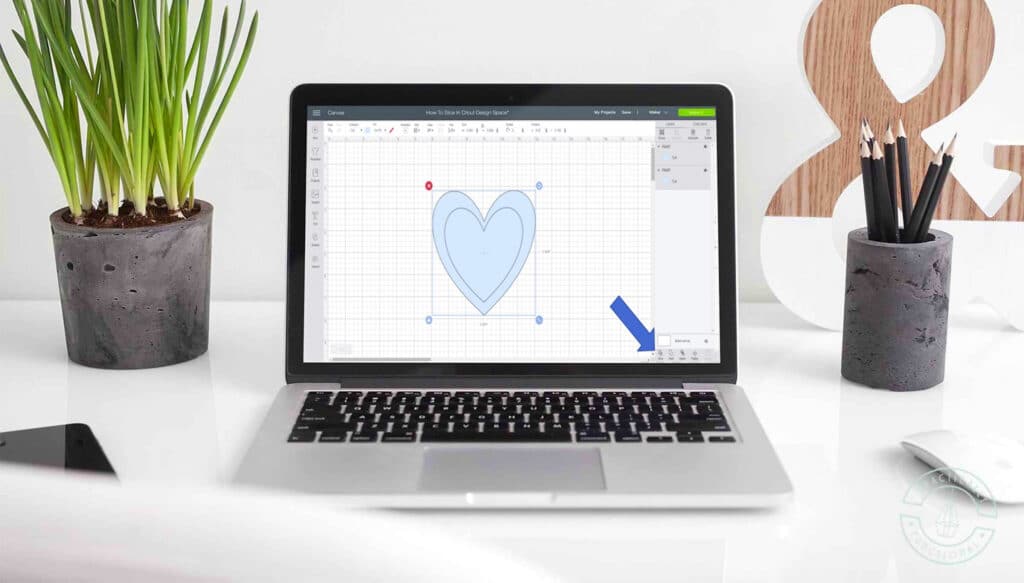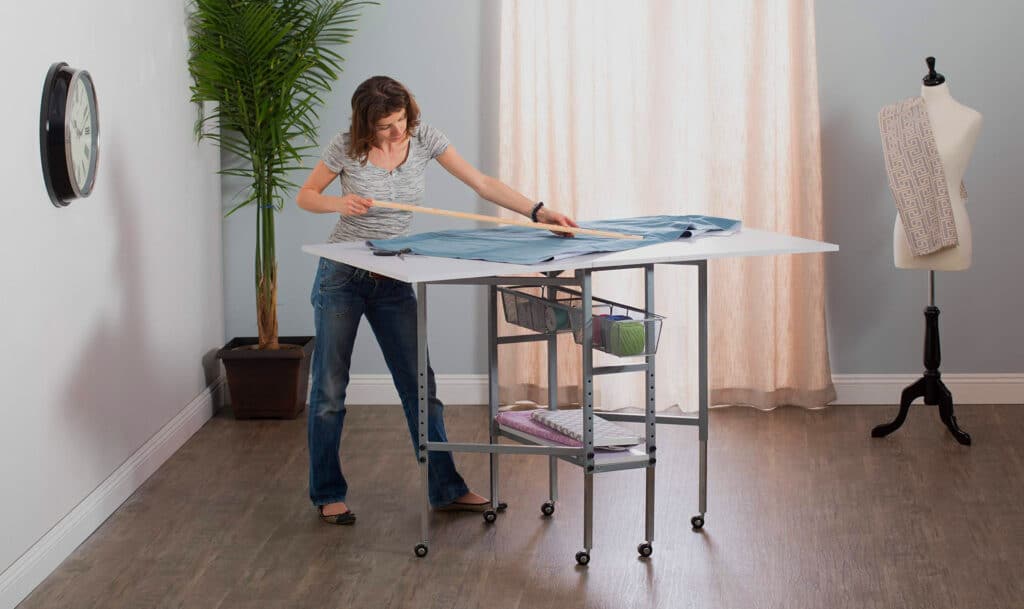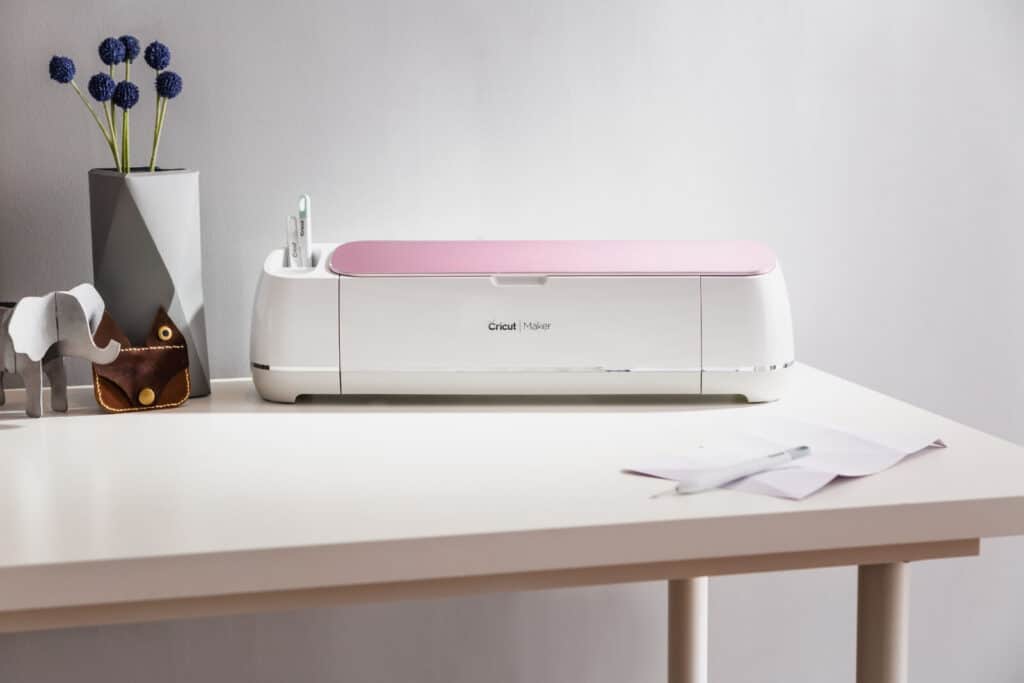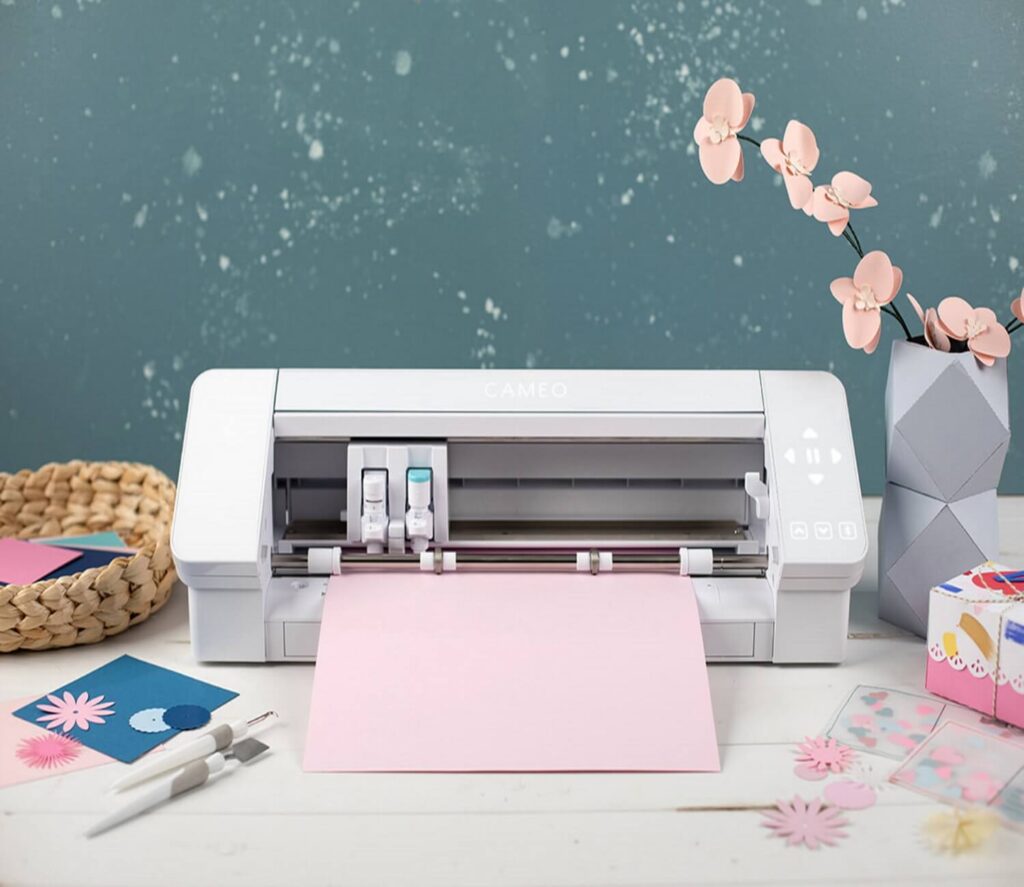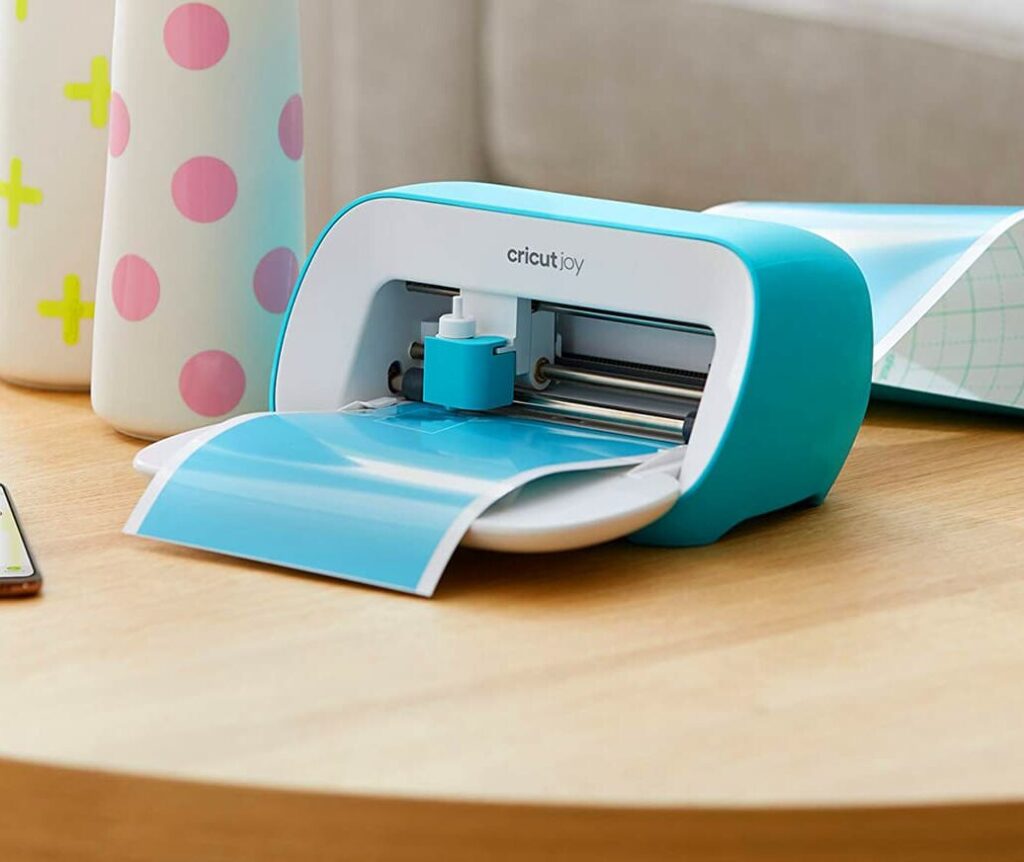

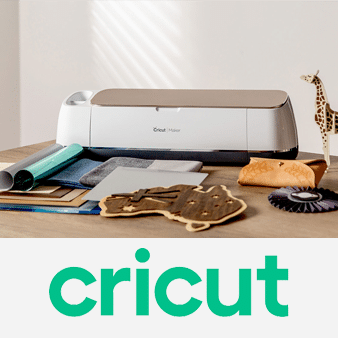
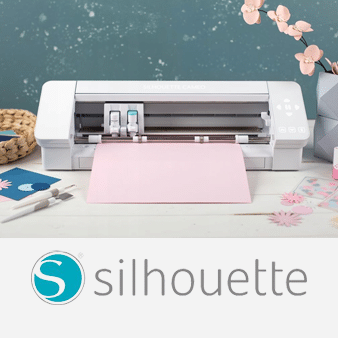
A lot of crafters are looking into the differences between Cricut vs Silhouette cutting machines. These two brands have some relatively similar models, and it is fair to say that both have modern features and a very smart design that beginners can get to grips with, but some of the Cricut models are a little cheaper. Cricut models are also often slightly better for sewing, so if you want to use the product for cutting out patterns for a sewing machine they might be suitable. Silhouette, on the other hand, has more functionality for vinyl cutting, and can cut up to 60ft of vinyl in one go.
Cricut is a brand that first shot to prominence in the early 2010s for its cutting machines. They have a fairly large range and produce some other products such as heat presses. They grew in popularity when some videos went viral of the machines being used to make “cricut cake” cutting fondant and other sweet goods. Cricut offers warranties that vary from 90 days to a year with most of the products having a year of protection. The brand has a strong community with plenty of users.
A lot of this can also be said of the Silhouette brand. Their products tend to have one-year warranties and since their products were first released in 2011 they have gained a reputation for quality. Their products also have fantastic software which enables them to be used in some really professional applications.
To give a fair comparison, you need to look at models from both brands. Both have multiple cutting machines that cover different ends of the market, from DIY enthusiasts and scrapbookers to those who need their cutter for professional applications.
| Silhouette Cameo 4 | Cricut Explore Air 2 | |
| Cutting size | 12” x 12”, 12” x 60’ | 11.5” x 23.5” |
| Cutting force (max) | 5000gf | 400gf |
| Dual Carriage | yes | yes |
| Printing Speed (max) | 30 mm/h | 30-50 mm/h |
| Material thickness (max) | 3 mm | 2 mm |
| Connectivity | Bluetooth, USB | Bluetooth, USB |
| Workable materials | 100+ | 100+ |
| Dimensions | 7.9” x 22.4” x 6.7” | 24” x 9.5” x 9.5” |
| Weight | 14 lbs | 17.3 lbs |
| Warranty | 1-year limited | 1-year limited |
A quick glance at the table above will show you some of the differences between the two machines, but also the fact that they have more in common than they do differentiating them. Both connect via Bluetooth and USB depending on what is best for you. The max printing speeds are very similar, so you can expect to get a very similar output in terms of how long it takes for the Cricut and the Silhouette to do their work.
The Cameo 4 is a little lighter, and it is just about verging on “portable” though you probably won’t be taking it far with you due to the fact that it is still pretty bulky. Have a look at Cameo 4 main features and functions:
Using other customer reviews and the consumer feeling around these models is difficult to consider, both tend to be exceptionally reviewed by the majority of users. People who love to craft tend to love either of these products.
One of the most important considerations between the two is the design software that you will be using. This is, in effect, the way you interact with your cutting machine, so you need to get software that is both easy enough to understand and that does what you want it to. It’s frustrating if you end up getting limited by the lack of software capabilities.
Cricut software has gone through different iterations but currently uses Cricut Design. This is pretty straightforward, and it is cloud-based so if you are online you can log into your account and make use of all your designs. Access anywhere, and not have to worry about updating. It’s powerful enough for the vast majority of uses, and also won’t clog up your machine’s memory.
Silhouette Design Studio is free, but there are some frustrations, as you need to pay extra if you wish to use SVG vector graphics. The design store is great, and has lots of templates that you can use for your projects, but you get the feeling that you have to keep spending to get the most out of it. With all of this in mind, it is fair to say that the Silhouette Design Studio is a bit more of a professional model.
These are two slightly smaller models, with more of an aim towards the market of home DIYers. They aren’t as closely linked as the two models above, which have very similar sizes. Instead, the Curio is more of a portable model while the Explore is bigger and more powerful. A lot of people are searching for this comparison due to the fact that they are at a relatively similar price point in the market. If you are looking to buy something under $300 then these are two of the products that you will find.
| Silhouette Curio | Cricut Explore 3 | |
| Cutting size | 8.5’’ x 6’’ | 13’’ x 12’ |
| Cutting force (max) | 210 gf | 4000gf |
| Dual Carriage | yes | yes |
| Material thickness (max) | 5 mm | 2.5 mm |
| Connectivity | USB 2.0 | Bluetooth, USB |
| Workable materials | 50+ | 300+ |
| Dimensions | 5.5’’ x 17.25’’ x 7’’ | 5.9’’ x 22.1’’ x 7’’ |
| Weight | 5.5 lbs | 11 lbs |
| Warranty | 1-year limited | 1-year limited |
In terms of the overall experience between these two models, the Cricut Explore has more of a feeling of being a professional model with a little bit more in terms of the capabilities for cutting. For example, it can cut a huge amount of materials and even though the thickness is lower than the Silhouette, it manages a far better job on things like chipboard and other stronger materials.
The Cricut Explore has a carbide blade and they tend to last a lot longer. Though both of these models are relatively small, and bigger die cut machines have more power, there is still plenty of cutting power.
The software is the same as above. Silhouette Design Studio is great for a more professional feel, but it can come with extra costs. Cricut is accessible via the cloud and on devices. You can download it on the Google Play store, which is very beneficial for some. However, if you don’t always have WiFi available, consider the Silhouette as it doesn’t need you to be connected to the internet for cutting.
If you are purely looking at cutting size and power then the Cricut Explore will probably win the day. On top of that, the number of workable materials is much, much higher.
As well as being able to use the Silhouette model offline, there are some other advantages. For instance, this is a really small product and this makes it one of the most portable cutting machines out there. It weighs half of what the Cricut Explore does, so if you are short of space then this could be a good option.
In terms of the price, they’re relatively similar. The Cricut Explore costs a little bit more, but this is probably worth it if you are looking for a product that has a little more cutting power and can cope with more robust materials than just cutting vinyl and paper or card.
One thing we also love about Cricut Explore is the fact that you can use it so easily with devices. You can incorporate an iPad and there is even an inbuilt stand for the devices, the fact that Cricut’s software works so well with the cloud means that you can access their software on any of your devices, and designs are even stored for you to load up and alter whenever you want to. If you wish to start something on your iPad but then finish it on your Laptop, that’s totally possible with their design suite.
Cutting force is another clear distinction if you look at the graph above. The cutting force of the Curio is much lower, but this only really makes a difference if you are using certain products and materials. As you would probably expect, there isn’t necessarily a clear “winner” between the two, but the Explore definitely has more power. These two models aren’t quite as similar as the Silhouette Cameo 4 vs. Cricut Explore Air 2 comparison, and there are more clear differences between the two. The Curio is a very good portable product so if you need something small enough to take on a trip with you, there is every chance you will opt for this.
This market is definitely growing, and there is no doubt that Cricut and Silhouette are two of the industry-leading brands, so it is worth noting some of the other products within their range, and comparing these to the others mentioned above. The more money you are willing to part with, the more features you are likely to get access to, but this is the same for so many different tech products. We’ve reviewed two more cutters below for you to compare and contrast.
The Silhouette Portrait 3 is a popular model due to the fact that it is a similar size to most home printers. If you have a space in your home office or craft room and you want a vinyl cutter or cutting machine then the Portrait 3 may sit quite nicely in this spot and give you the potential of years of reliable use. It shares the one-year manufacturer warranty of some of the other products on the list, and has some impressive features.
The cutting width of the product is up to 8 inches with a length of 12 inches if you have a cutting mat. With selected rolled materials such as vinyl, you can actually install and cut up to 60 feet if you use selected materials. This can be incredibly useful for cutting a whole length of stickers, for example.
It has some modern features including automatic tool detection and matless capabilities.
The product has a 2mm cutting depth for thicker materials, which is pretty good. It also uses the Silhouette Studio that we’ve been so impressed by.
The Portrait 3 is great for some specific uses, and for those whose demands from their cutter aren’t that extreme, however, something like the Cameo 4 might be worth the upgrade if you have higher demands from your cutter. Because it doesn’t have the dual carriage that the Cameo 4 does, it can only do one thing at a time, like cutting vs drawing. In effect, if you need to do both then it will take twice the time.
There’s definitely a place for the Portrait 3, one of the smallest products and most lightweight ways to get a reliable cutting.
The Maker 3 costs a little more than some of the options we’ve discussed on this list, but for certain people, it could well be worth this extra investment. It has some impressive features and powerful functionality.
It has compatibility with 300 different materials so you can print and cut on so many different items. It also has 13 different compatible tools that you can connect to expand your capabilities and what the cutting machine can actually do.
You can use leather, wood, vinyl, paper, chipboard, and far more, and the Cricut can handle it. A lot of woodworkers love this product as it seems to make light work of thin woods and chipboards, as well as other fabrics and materials.
The Cricut brand is continuing to innovate, too, in new ways that make life even easier if you are looking for convenience as well as being able to work with a wide range of materials.
The Cricut Joy was the first product cutting without a mat, but the Joy wasn’t very big. The newer models, including the Maker 3 gives you the option to cut in rolls without needing a mat. These are 12 inches wide and can be 60 feet or even up to 75 feet in length. You can only use certain materials, but this may be all you need. You can cut out Iron-On, Paper Sticker Cardstock and “Smart” Vinyl. These don’t need a mat which means that your preparation time is far reduced for a lot of your crafting products.
The Maker 3 model shows how technology is evolving. Some of the features may be overkill for those who are doing some simple home crafts, but if you’re serious about it, you may be able to take advantage of new features, like the fact you can work with larger projects. Wall decals and signage can now be longer in just one piece. This means you can have projects that are as long as 12 feet. In previous models if it was longer than two feet you would need to cut multiple pieces and then line them up. 12 inches by 12 feet long is now your limit if you go for the Cricut Maker 3.
The Maker 3 is ideal for a variety of professional uses. For example, you may wish to use it for sign making or vinyl decals. If you need a hard-wearing model that can cope with larger projects then this could certainly be worth a little extra investment.
Both Cricut and Silhouette products can give you a suitable way of cutting a variety of different materials. The brands are both relatively new in the big scheme of things, but over the last 10 years they’ve both become very popular among crafters and even in business use. Making the Cricut vs Silhouette comparison means understanding that you need to work out the differences based on your own needs. Both have models under $300 that can provide you with plenty of features for home use, and even be used with your phone and tablet. Above this price range, products like the Maker 3 have even more speed and impressive functionality, at home for both hobbyists and professionals.
